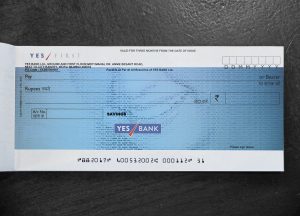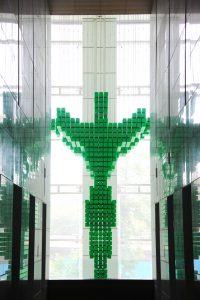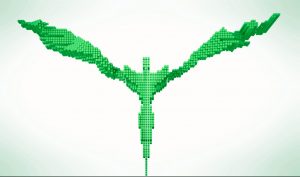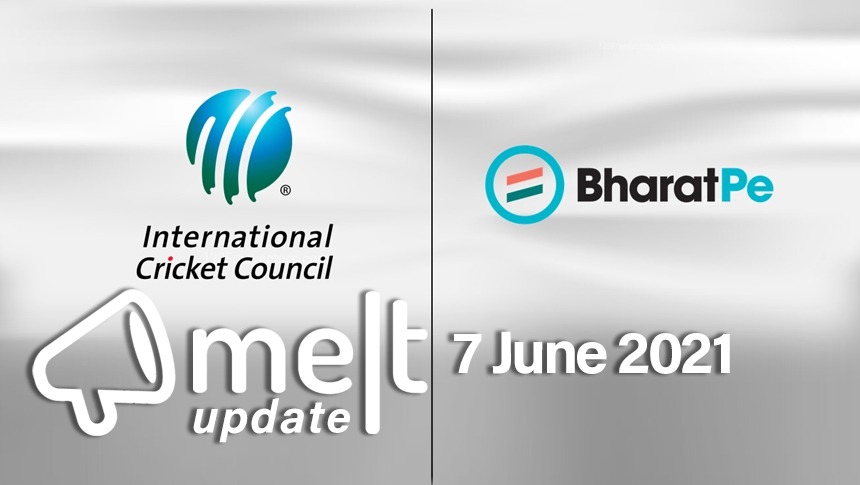You became the youngest National Creative Director in India when you took up the advertising job at Publicis India. From a cushy ad job to starting your own retail designing agency Hyphen… talk about your journey?
My former boss Alok is now my partner. I used to work in Alok Nanda & Company which was sort of a multidisciplinary outfit. Apart from advertising, we had interesting job profiles like launching retail stores. Design is my forte, so I was naturally gravitated towards that. Apart from advertising, I also had such side projects that’d get me mentally stimulated. After I got a little jaded out with advertising, I realised this is what I want to do. I love advertising and it has been a great knowledge source but I thought I need to push myself a little more in terms of design. I’m sort of a field architect so this really appealed to me. I guess that’s where the connect comes from.
Right, you’re a graduate from the JJ School of Arts, Mumbai…
Yes. I was expecting to score 90 percent in my SSC exams and was supposed to get into JJ School of Architecture. But I only got 81 percent was very dejected that day. And I decided I’m not going to study from this day onwards. (Laughs) My whole family has an art background so I naturally gravitated towards art.
You’ve worked in both the sectors of advertising as well as designing… as a creative person, where do you think lies the major difference or is there something that ties them together?
I think, it’s not inseparable. The only difference lies in the focus on key areas. In advertising, you’re relying mainly on the communication and design is peripheral, whereas in design your whole strength is on the strategy, your aesthetics and communication forms a little backbone. I feel there’s a huge opportunity for companies or corporates in India to start with the strategic design part and then carry over to communication design. Or, the design companies can do the same.
So your advertising background helped in making this shift…
Oh yes, it completely helped. Sometimes clients want you to have a little bit of a background or sensitivity to understand what their problems are or what they want. So, it really helps when you have the entire background of the brand or the market or the strategy that is going into place. It also helps position design in such a strong way that design always becomes a solution for them. It’s not a thing that you require… it’s not an optional thing, it just becomes mandatory. They start looking at design from a new lens. I’ve used my advertising knowledge to push the design agenda forward.
You’ve been responsible for retail designing of brands like YES BANK, Orra diamonds, Lee Jeans… what do you keep in mind while designing such brands? How does the design help consumers?
You have to step back and say ‘this is not what I want to do but keep in mind what is the reality in the market today and what the consumers are experiencing’. When YES BANK was launched in 2005, we were part of the core team that did the entire branding. The CEO Mr Rana Kapoor saw that we have a keen learning and understanding of the space we were getting into. When we designed the first flagship branch of YES BANK in Mumbai’s Nariman Point, the branch itself was so different from the existing banks. We had low drop-down lights, lounge sittings, blue colours and a library where you can sit and take a coffee break… all of these were designed keeping in mind that the consumers look forward to it. So that they appreciate it and it becomes a part of their lives and enriches their life in some way. So, retail design didn’t come as a separate discipline which was forced, we naturally evolved it from the consumer’s life and made it into a different experience. The experience of retail designing is the key point… what do you experience when you go to a store. For example, the Lee store that we designed in 2006… it was a physically constrained long and deep store. We wondered how do we take the consumers from the doorstep to the end of the store to reach all the merchandise. We took a measuring tape device that took you through the history of Lee and guided you till the end… large, bold graphics were kept at the back of the store so that your eyes naturally lean towards it. There are things that you do that are based on real facts and if you do that, I think any project will be successful.


Talking about YES BANK, you had even put a typographic smiling face of a lady on the cheque books. How do you think that design helped in brand communication?
It was a very subliminal brand message. It stays with you because the brand is not trying hard to push at you. The name YES BANK can have a negative connotation of being a ‘Yes Sir’ sort of a bank, but that’s not the kind of feeling the bank gives. The bank is based on knowledge… if you’ve a query they’ll solve it, there’s an atmosphere of positivity that they’ve inculcated in this bank. So a smile on the cheque book becomes a natural representation of it. And instead of saying yes everywhere which we do in YES BANK, subconsciously a smiling face is nicer and warmer. It’s not a brand push, it’s rather a background subliminal message.
It took you 14 months to build India’s first art installation for Indiabulls – ‘The Rising’, that won you a Design Grand Prix. It looks really nice, but how does such art installations practically help a brand?
(Smiles) It’s a very good question. We had scaffolded the installation the entire time till it was launched, but people were still passing by and looking at it. We had anticipated it and it happened on the day it was unveiled… not one employee of Indiabulls went straight to the elevator after coming to office. They all stood there looking at it with a smile on their face and a feeling of pride in their eyes. Some of them were taking pictures. But the general feeling was of ‘yeah, I work at this place’. There was a placard explaining the concept of the art installation and when they read it, they felt nice about working in this organisation. Rather than using simple wall graphics asking you to be motivated, this art installation made you feel motivated and feel proud at the same time. It also gave you a sense of belonging. It’s something that’d make you go tell your friends ‘hey, I went to office today and there was a giant sculpture, representing our company’. The feeling of being a part of something is what we intended to achieve with this installation, and we did.


How often do you get something like that though, that challenges you as an artist?
Sometimes there are lean periods and you need to do something that will keep you motivated. Other times, there are like three projects together, demanding your constant attention and stretching your creative possibilities. You have to see the potential of every brief that comes to you. If you’re an experienced professional and have done your solid groundwork, then most of the time it’s easy for you to operate with at least 60 percent of your potential capacity and still go through a good day. So it depends on you, how motivated you become after a while, how you look at a brief that has come to you, what potential it has and then actually apply your skills and make the maximum out of that. It’s up to us to pick and choose and the client plays a very important role in it. The client has to be open to possibilities because you can do a good thing but if the client doesn’t want it, then you’re pushing a wrong button.
… and then there are moments of frustration?
Yes, because then you’re not understanding his part, what are his expectations out of it. So you have to have an open conversation with the client saying ‘listen, we can do this for you, but there’s a lot more we can bring to the table. Do you really want it?’ More often than not, I’ve found out that the clients do really want our engagement. They’re looking for people to advise them on branding, strategic designing. They want our guidance because India is such a dynamic market right now. They are looking for information, they’re looking for senior people to play a role.
What role does design play in brand engagement today?
Design is omnipresent. From the airport till here at the hotel, design is everywhere around us, especially in the brand world, in every single detail… be it the logo of Vodafone, or of Airtel, it’s all around us. These are all subliminal things that are always happening to us… on the sim card there’s a comma of Airtel. It’s there for a reason. You’re engaging with the brand at all point of time, right till the point we go to sleep. The first thing you see when you wake up, is a newspaper. It is upto us how we can squeeze the maximum value out of design.
Talking about squeezing out the maximum value out of design, do you think design helps brands in charging a premium?
Yes certainly. It is a no-brainer. Design has always been there and helped brands be of more value than any other standard product. Apple is the classic case. Why else would you pay 999 dollars for an iPhone X? Design has always been the driver of this industry. And it’s only now that we are realising that. Clients are taking it seriously and figuring out the implementation of it. So we, as a design industry or brand industry have to partner up with the clients in order to forward this initiative.
As a designer, what would be your message to the clients?
(Laughs) I’ve a long list of things to say. But I’ll summarise it and say only two things. Firstly, there’s a cliched opinion or a stereotype that exists about a designer in the minds of a client or the marketing community. They think we are eccentric people and if we decide on a colour we will stick to it. But that’s furthest from the truth. Any good designer that I know, the masters that I’ve learnt from and the ones that inspire me… they’re all good strategic thinkers, they’re problem solvers. Any good designer you talk to will talk to you in the language of logic. They’re not eccentric. Everything that they do has a reason behind it, and the reason more often than not is to solve a client’s problem. So, this is what I’d like to tell a client, that if you engage with a real design person, you will get good strategic inputs for your business, not just your design. Secondly, clients have started applying design in different areas of their expertise, like production design. They’re maximising their production assembly lines with their design and cutting down the cost with the help of design. When it comes to strategic design and brand design, we are relying too much on what our knowledge should be rather than exploring newer avenues of strategic design. And I think that area is wide open. We, as the design and branding community, are open to partnering with all the clients in this initiative. I think there’s a chance for the industry and the client to come together and explore new avenues of design. India is such a growing economy right now. It’s the perfect time to capitalise on this. It makes huge economic sense for the client to partner long term with strategic design people.

